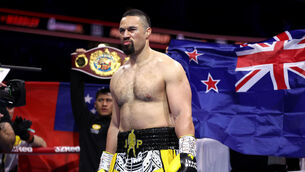First to win at 3 Games in row
He had been a proficient sprinter and jumper in his earlier days, but in 1894 he began competing in weight throwing events and came into his own. He was the first person to perfect the three-turn technique in throwing the 16lb hammer from within the 7-foot circle. In 1896, he set a world record of marginally over 145 feet, beating by two feet the record set in the US by James Sarsfield Mitchell from Emly, Co Tipperary.
Flanagan went on to win the AAA championships in London that year. In 1897 he moved to the US, where, in 1897, he became the first person to throw the hammer more than 150ft, over 170ft in 1901, and over 180ft in 1909, when he was 40, making him the oldest athlete to set a world record in any track and field event.
As a member of the New York Athletic Club, he was chosen for the Paris Olympic games at which the hammer throw was introduced in 1900. He was not in the US long enough to become a naturalised citizen, and there is no record that he ever took American citizenship.
The athletics were staged in the open park area of the Bois de Boulogne. The hammer throw was held along a narrow avenue of trees, which formed an unusual trap for the wire of the hammer as it sometimes got snagged in trees.
In 1904, Flanagan retained his hammer title in St Louis with an Olympic record throw of 51.23m, almost 5m ahead of his nearest rival. Three days late,r he won the silver medal behind Étienne Desmarteau of Canada in the 56lb weight throw, with Jim Mitchell of Emly winning the bronze medal in third place.
Flanagan narrowly missed out on collecting a full set of medals when he finished 4th in the discus. There was no hammer throwing in the intercalated games of 1906 at Athens, so Flanagan became the first man to win the same event at three consecutive Olympics when he won the hammer at the 1908 games in London. At almost 40, he was the oldest gold medal winner that year.
Flanagan returned to Kilbreedy in 1911 to take over the family farm. While at home, he coached Pat O’Callaghan on his way to winning Olympic gold medal at Amsterdam in 1928 and Los Angeles in 1932.














